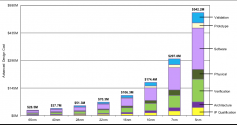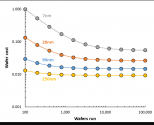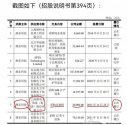Any link for 5/7 nm in radar applications?It’s not entirely a joke. State-of-the-art radars use 7nm and 5nm chips. Future applications of AI in weapon systems will require large computing and storage resources for training of deep learning models. AI at the edge often requires high power efficiency: nVidia recently demonstrated a 5nm inference chip for such applications.
Problem with the low size nodes is the extreme cost of chip design.
And the extreme cost to make only few of them.


A single 5 nm chip design cost as 5 F-35.
And if there is say 20 type of chips then the deisgn of all of them on 5nm will cost as much as 100 F-35.
If they want to re-design them because of mautring issues then they need to spend again that ammount of money. Instead to make, you know , fighter jets.
Reason why the military designs are 90 nm - 18 nm range. The cost to make smaller ICs prohibitivly high for small product run, it cheaper to make a bit bigger power supply in the missile than to spend extreme ammount of time and money for smaller nodes.
Risk is too high, consdiering that during the full system integration period they can find problems that require the full re-design of the ICs.


